


Keynote & Plenary Speakers
(Speakers listed in name alphabet order)



Keynote & Plenary Speakers
(Speakers listed in name alphabet order)
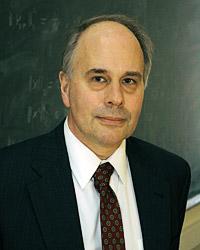
Robert Calderbank (NAE member, IEEE/AAAS Fellow, AT&T Fellow)
Charles S. Sydnor Professor, Duke University, USA
Keynote Talk Title: 5G Wireless Illuminating New Directions in Theory
Time:
8:30-9:30AM, Tuesday, March 6, 2018
Abstract:
The world of wireless communications is changed rapidly, and I will look
back at GSM, CDMA, and OFDM, and describe how these technologies that were
developed in response to demanding use cases. I will then try to look
forward at use cases motivating 5G wireless, such as drones, high speed
trains and the Internet of Things (IoT). I will explore what might be
possible with OFDM, and what might be more difficult. The discussion will
motivate the introduction of OTFS (Orthogonal Time Frequency Space), a
physical layer technology that can be architected as an OFDM overlay. I will
explain potential advantages of OTFS over legacy multicarrier modulation
schemes (OFDM) in the context of various 5G use cases such as MU-MIMO
equalization and precoding, communication under high Doppler conditions (V2X
and V2V) and communication under power constraints (such as in IoT).
Biography:
Robert Calderbank is Director of the Information Initiative at Duke University, where he is Professor of Electrical Engineering, Computer Science and Mathematics. He joined Duke in 2010, completed a 3 year term as Dean of Natural Sciences in August 2013, and also served as Interim Director of the Duke Initiative in Innovation and Entrepreneurship in 2012. Before joining Duke he was Professor of Electrical Engineering and Mathematics at Princeton University where he also directed the Program in Applied and Computational Mathematics. Before joining Princeton University, Dr. Calderbank was Vice President for Research at AT&T. As Vice President for Research he managed AT&T intellectual property, and he was responsible for licensing revenue. AT&T Labs was the first of a new type of research lab where masses of data generated by network services became a giant sandbox in which fundamental discoveries in information science became a source of commercial advantage
At Duke, Dr. Calderbank works with researchers from the Duke Center for Autism and Brain Development, developing information technology that is able to capture a full spectrum of behavior in very young children. By supporting more consistent and cost-effective early diagnosis, the team is increasing the opportunity for early interventions that have proven very effective. At the start of his career at Bell Labs, Dr. Calderbank developed voiceband modem technology that was widely licensed and incorporated in over a billion devices. Voiceband means the signals are audible so these modems burped and squeaked as they connected to the internet. One of these products was the AT&T COMSPHERE® modem which was the fastest modem in the world in 1994 – at 33.6kb/s! Together with Peter Shor and colleagues at AT&T Labs Dr. Calderbank developed the group theoretic framework for quantum error correction. This framework changed the way physicists view quantum entanglement, and provided the foundation for fault tolerant quantum computation. Dr. Calderbank has also developed technology that improves the speed and reliability of wireless communication by correlating signals across several transmit antennas. Invented in 1996, this space-time coding technology has been incorporated in a broad range of 3G, 4G and 5G wireless standards. He served on the Technical Advisory Board of Flarion Technologies a wireless infrastructure company founded by Rajiv Laroia and acquired by Qualcomm for $1B in 2008.
Dr. Calderbank is an IEEE Fellow, AAAS Fellow, and an AT&T Fellow, and he was elected to the National Academy of Engineering in 2005. He received the 2013 IEEE Hamming Medal for contributions to coding theory and communications and the 2015 Shannon Award.
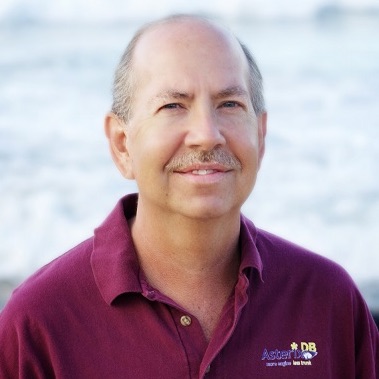
Michael J. Carey (NAE member, ACM/IEEE Fellow)
Bren Professor of Information and Computer Sciences, University of
California, USA
Keynote Talk Title: Big NoSQL Data, Apache AsterixDB, and Beyond
Time:
8:30-9:30AM, Monday, March 5, 2018
Abstract:
Big Data comes in many shapes and sizes. Today's varieties of Big Data
include Big Tabular Data (e.g., large enterprise-style relational data
sets), Big Graph Data (e.g., large social networks), Big Textual Data (e.g.,
large collections of blogs or messages), and of course Big Semistructured
Data (e.g., large collections of JSON objects) — a.k.a. Big NoSQL Data. This
keynote will examine the NoSQL faction of the Big Data movement, describing
the nature of this data and then surveying some of the platforms for storing
and querying such data today — a.k.a. document database systems. To make
things concrete, the talk will include a deeper look at Apache AsterixDB, an
open-source Big Data Management System that originated from several
University of California campuses and provides an excellent foundation for
managing NoSQL data. Details covered will include its underlying storage
technologies and the sorts of schema-related, ingestion-related, and
query-related features that more and more such systems are beginning to
offer. The talk will also discuss our current efforts to move from our
current world of passive Big Data platforms to a new "BAD" (Big Active Data)
world. The keynote will close with an enumeration of some of the open
technical challenges in the NoSQL data management space.
Biography:
Michael J. Carey received his B.S. and M.S. degrees from Carnegie-Mellon University and his Ph.D. from the University of California, Berkeley, in 1979, 1981, and 1983, respectively. He is currently a Bren Professor of Information and Computer Sciences at the University of California, Irvine (UCI) and a Consulting Architect at Couchbase, Inc. Before joining UCI in 2008, Dr. Carey worked at BEA Systems for seven years and led the development of BEA's AquaLogic Data Services Platform product for virtual data integration. He also spent a dozen years teaching at the University of Wisconsin-Madison, five years at the IBM Almaden Research Center working on object-relational databases, and a year and a half at e-commerce platform startup Propel Software during the infamous 2000-2001 Internet bubble. Dr. Carey is an ACM Fellow, an IEEE Fellow, a member of the National Academy of Engineering, and a recipient of the ACM SIGMOD E.F. Codd Innovations Award. His current interests all center around data-intensive computing and scalable data management (a.k.a. Big Data).
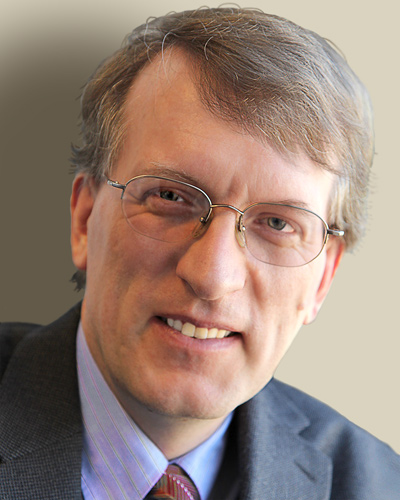
Henning Schulzrinne (ACM/IEEE Fellow)
Former CTO, FCC of United States, USA
Levi Professor, Columbia University, USA
Keynote Talk Title: Telecom policy: competition, spectrum, access and
technology transitions
Time:
8:30-9:30AM, Thursday, March 8, 2018
Abstract:
Telecom regulatory and policy agencies are facing a common set of
challenges, colored by the specific legal and political circumstances in
each country or region. I will highlight some of the hard problems that need
to be addressed: * From the 1980s to recently, either multi-modal
competition (cable vs. DSL, say) or unbundling provided standard policy
tools to encourage competition. Often, these policies could essentially
leverage the fact that carriers could not predict the usage of their outside
plant when they built it. However, the emergence of fiber and hybrid-fiber
networks, as well as LTE and 5G, makes these policy tools less attractive.
Biography:
Prof. Henning Schulzrinne, Levi Professor of Computer Science at Columbia University, received his Ph.D. from the University of Massachusetts in Amherst, Massachusetts. He was an MTS at AT&T Bell Laboratories and an associate department head at GMD-Fokus (Berlin), before joining the Computer Science and Electrical Engineering departments at Columbia University. He served as chair of the Department of Computer Science from 2004 to 2009, as Engineering Fellow, Technology Advisor and Chief Technology Officer at the US Federal Communications Commission (FCC) from 2010 to 2017.
He has published more than 250 journal and conference papers, and more than 70 Internet RFCs. Protocols co-developed by him, such as RTP, RTSP and SIP, are used by almost all Internet telephony and multimedia applications. He is a Fellow of the ACM and IEEE, has received the New York City Mayor's Award for Excellence in Science and Technology, the VON Pioneer Award, TCCC service award, IEEE Internet Award, IEEE Region 1 William Terry Award for Lifetime Distinguished Service to IEEE, the UMass Computer Science Outstanding Alumni recognition, and is a member of the Internet Hall of Fame.
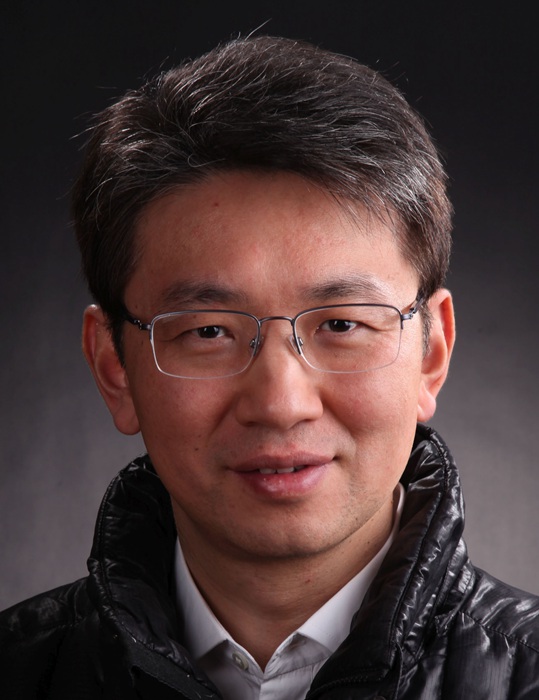
Yunhao Liu (ACM/IEEE Fellow)
Chang Jiang Chair Professor, Tsinghua University, China
Keynote Talk Title: Internet of Everything for the New Industrial
Revolution
Time:
8:30-9:30AM, Wednesday, March 7, 2018
Abstract:
In this talk, I will introduce several of our ongoing Internet of Things (IoT)
projects such as the GreenOrbs and TagSys. In GreenOrbs and CitySee, we have
deployed over 1000 sensor nodes, with totally more than 10,000 sensors, for
monitoring water, CO2, NO2, automobiles, and human activities. The ongoing
project TagSys, a passive RFID based luggage tracking system, has resulted
the ACM MobiCom 2014 Best Paper Award and has been deployed in Beijing
International Airport with more 110,000 tags. I will focus on a few key
ideas such as passive diagnosis, sensorless sensing, and communication as a
sensing, the opportunities and challenges in extremely large scale IoT
systems, and the impact of IoT to the new industrial revolution.
Biography:
Yunhao Liu, ACM Fellow and IEEE Fellow, Chang Jiang Chair Professor at Tsinghua University. Yunhao received his BS degree in Automation Department from Tsinghua University in 1995, and an MS and a Ph.D. degree in Computer Science and Engineering at Michigan State University in 2003 and 2004, respectively. Yunhao was in the faculty of the Department of Computer Science at the Hong Kong University of Science and Technology from 2004 through 2011 and the School of Information Technology, Tsinghua University from 2011 through 2017. Yunhao is an ACM Distinguished Speaker and the recipient of the IOT Young Achievement Award from the China Computer Federation (2016), the ACM Presidential Award (2013), and the NSF China Distinguished Young Scholar Award (2011). He has authored/co-authored three books and more than 180 research papers. He received 4 Best Paper Awards in international leading conferences and has over 18,000 citations with an h-index of 58.

Nick Bambos
Weiland Professor and Department Chair, Stanford University, USA
Plenary Talk Title: Transmitter Power Control in Wireless Networking
Time:
13:30-14:30, Tuesday, March 6, 2018
Abstract:
Transmitter power control is key to maintaining quality-of-service stability and robustness on wireless links, mitigating interference and increasing network capacity, and conserving energy to prolong battery use on mobile devices. Additionally, it is critical for autonomous channel selection and access, as well as the means for distributed bandwidth sharing. As a result, power control is a core aspect of wireless networking, ranging from cellular networks to the wireless internet-of-things.
In this talk, we discuss some important problems and principles of power control. We start with continuous (streaming) transmission and address the channel selection and admission problem via power control. We then discuss packetized transmission and address the power vs. delay tradeoff. We also consider power control problems in wireless computing, for example, cache management and mobile vs. base computation. Finally, we discuss the "physics" and asymptotics of power control on large random wireless networks.
Biography:
Nick Bambos is R. Weiland Professor at Stanford University, having a joint appointment in the Electrical Engineering department and the Management Science & Engineering department, where he is currently the Fortinet Chairman of the department. He received his PhD in EECS at the University of California, Berkeley (1989) and his engineering diploma at the National Technical University of Athens, Greece (1984). He served on the electrical engineering faculty at UCLA, before joining Stanford in 1996. He has won several awards and "best paper" distinctions for his research, for example, the best ICC paper award in Green Communication and Computing in 2014. His main research contributions span the areas of wireless networks and large scale computing infrastructures for Internet services. His methodological research contributions are mainly in stochastic network control and queueing/scheduling dynamics of processing networks. His current research interests are in high-performance engineering of computer systems and networks, including issues related to system architecture and overlay services on the Internet, ranging from packet scheduling to power control and media-streaming.
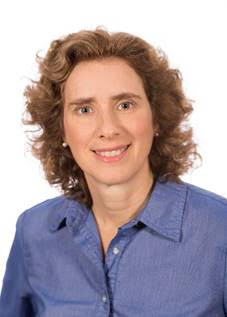
Jill M. Boyce (Intel Fellow)
Chief Media Architect, Intel, USA
Plenary Talk Title: Video Standards Update for New Immersive User
Experiences
Time:
10:00-12:00, Wednesday, March 7, 2018
Abstract:
Immersive video has been gaining attention recently, enabling new media
consumption user experiences with head-mounted display. Some new use cases
can take advantage of 5G network infrastructure. New user experiences range
from 360° video which provides 3 Degrees of Freedom (DoF) for the viewer to
select a view orientation from a fixed position, to 3 DoF+ which adds
limited translational movement, to 6 DoF which allows the viewer to move
around the observed scene. An update on the standards activities in MPEG and
the JCT-VC of MPEG and ITU-T VCEG will be provided, including 360 video
support in a new version of HEVC and MPEG Systems OMAF, and the results of
the MPEG Call for Proposals on point clouds and the MPEG/VCEG Call for
Proposals on Video Compression with Capability beyond HEVC.
Biography:
Jill M. Boyce is Intel Fellow and Chief Media Architect at Intel. She represents Intel at the Joint Collaborative Team on Video Coding (JCT-VC) and Joint Video Exploration Team (JVET) of ITU-T SG16 and ISO/IEC MPEG. She serves as Associate Rapporteur of ITU-T VCEG, and was an editor of the Scalability High Efficiency Video Coding extension (SHVC).
She received a B.S. in Electrical Engineering from the University of Kansas in 1988 and an M.S.E. in Electrical Engineering from Princeton University in 1990. She was formerly Director of Algorithms at Vidyo, Inc. where she led video and audio coding and processing algorithm development. She was formerly VP of Research and Innovation Princeton for Technicolor, formerly Thomson. She was formerly with Lucent Technologies Bell Labs, AT&T Labs, and Hitachi America. She was Associate Editor from 2006 to 2010 of IEEE Transactions on Circuits and Systems for Video Technology. She is the inventor of 145 granted U.S. patents, and has published more than 40 papers in peer-reviewed conferences and journals.

Lina Karam (IEEE Fellow)
Professor and Department Chair, Arizona State University, USA
Plenary Talk Title: Generative Sensing
Time:
13:30-14:30, Wednesday, March 7, 2018
Abstract:
This talk introduces the framework of Generative Sensing which integrates
low-end sensors with deep learning based computational intelligence to
attain a high recognition accuracy on par with that attained with high-end
sensors. The proposed generative sensing framework aims at transforming
low-end, low-quality sensor data into higher quality sensor data in terms of
achieved classification accuracy. This is achieved through the introduction
of selective feature regeneration in a deep neural network (DNN). The
proposed generative sensing will essentially transform low-quality sensor
data into high-quality information for robust perception.
Biography:
Dr. Lina Karam received the B.E. degree in computer and communications engineering from the American University of Beirut, Beirut, Lebanon, in 1989 and the M.S. and Ph.D. degrees in electrical engineering from the Georgia Institute of Technology, Atlanta, GA, USA, in 1992 and 1995, respectively. She is currently a full professor in the School of Electrical, Computer & Energy Engineering, Computer Engineering Director, and the Director of the R&D Image, Video, and Usability (IVU) Lab at Arizona State University. She is also the President of PICARIS, LLC, a consulting company on media processing, compression, understanding, and analytics. Dr. Karam is an IEEE Fellow, the highest grade level in IEEE which is conferred each year to no more than one-tenth of 1% of all IEEE voting members, for her contributions in the image and video processing, visual media compression and transmission, and digital filtering areas. Dr. Karam is a recipient of the National Science Foundation CAREER Award, NASA Technical Innovation Award, the Intel Outstanding Researcher Award, the IEEE Signal Processing Society’s Best Journal Paper Award, and the the IEEE Phoenix Section Outstanding Faculty Award. Her industrial experience includes image and video processing and compression development at AT&T Bell Labs (Murray Hill), multi-dimensional data processing and visualization at Schlumberger, and collaborations on computer vision, machine learning, image/video processing, compression, and transmission projects with various industries including Intel, Qualcomm, Google, NTT, Motorola, Freescale, General Dynamics, and NASA. She has over 200 technical publications and she is an inventor on several issued patents.
Dr. Karam has served on several journal editorial boards, several conference organization committees, and several IEEE technical committees. She served as the lead guest editor of the Proceedings of the IEEE, Special Issue on Perceptual-Based Media Processing. She served as the General Chair of the 2016 IEEE International Conference on Image Processing, Technical Program Chair of the 2009 IEEE International Conference on Image Processing, General Chair of the 2011 IEEE International DSP/SPE Workshops, and as the Lead Guest Editor of the IEEE Journal on Selected Topics in Signal Processing, Special Issue on Visual Quality Assessment. She has cofounded international technical workshops and conferences (VPQM and QoMEX). She is currently serving on the IEEE Signal Processing Society’s Board of Governors and the IEEE Publications Board as the IEEE Women in Engineering Liaison. She is a member of the Foundation and Trends in Signal Processing Journal Editorial Board and of the IEEE Signal Processing Magazine Senior Editorial Board. She is also a member of the IEEE Signal Processing Society’s Image, Video & Multidimensional Signal Processing Technical Committee, and the IEEE Circuits and Systems Society’s DSP Technical Committee. She is a member of the Signal Processing, Circuits and Systems, and Communications societies of the IEEE.
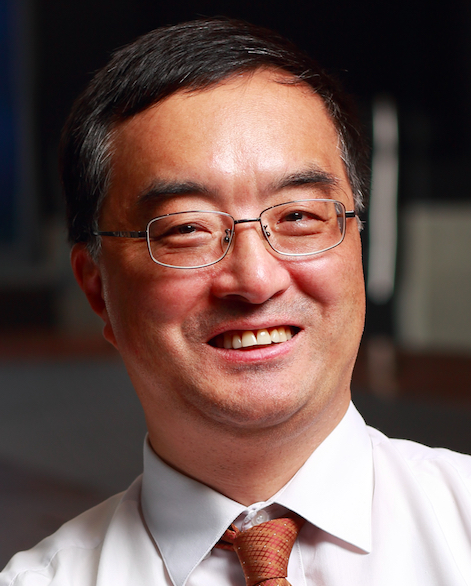
Zhen Liu (IEEE Fellow)
CTO, Logitech, Switzerland
Plenary Talk Title: Information Management of Internet of Things
Time:
10:00-12:00, Wednesday, March 7, 2018
Abstract:
With the advent of 5G, we are going to witness a much faster ramp up in the
deployment and use of Internet of Things (IOT). 5G will provide the
availability of bandwidth anywhere and the low power consumption that are
needed for IoT scenarios. Together with such large scale deployment of IOT
will come a number of challenges. In this talk, we will discuss the ones
pertaining to information management, including device management, data
integration, security and privacy.
Biography:
Dr. Zhen Liu is the CTO of Logitech, and is in charge of the technology strategies and their implementation for Logitech worldwide. Before joining Logitech in March 2017, Zhen was the head of Microsoft China Innovation Group. Prior to this experience, Zhen was with Nokia as the Head of Nokia Research Center (NRC) Beijing, and then became the Head of NRC Growth Economies Lab. Before joining Nokia, Zhen was with IBM T. J. Watson Research Center and served as the senior manager of the Next Generation Distributed Systems department. And before his IBM experience, Zhen was a Research Director at INRIA (the French national research center on information and automation).
Zhen is a fellow of IEEE. He has published over 200 papers and obtained over 100 granted patents from US Patent Office. Zhen Liu was the general chair of the ACM Sigmetrics 2008 Conference, co-chair of ACM HotMetrics 2008, program co-chair of the Joint Conference of ACM Sigmetrics and IFIP Performance 2004, technical program co-chair of Sensorcomm 2009, and area technical program committee chair for INFOCOM 2008 and INFOCOM 2009. Zhen is on the editorial boards of several journals including IEEE Transactions on Service Computing and the Journal of Performance Evaluation.
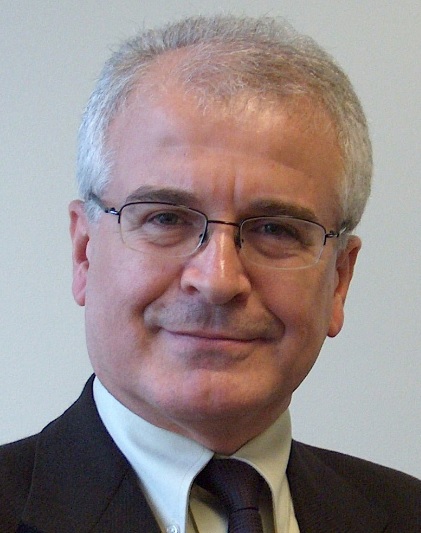
Hikmet Sari (IEEE Fellow, European Academy member, Turkey Science
Academy Member)
Professor,
Centrale Supelec,
France
Plenary Talk Title: Challenges Ahead for Multiple Access in 5G
Time:
14:30-15:30, Tuesday, March 6, 2018
Abstract:
Multiple access refers to the way radio resources are shared among different
users. The multiple access techniques used in 2G and 3G cellular networks
were time-division multiple access (TDMA) and code-division multiple access
(CDMA), both being used in conjunction with single-carrier transmission. A
big leap came out when WiFi, WiMAX, and 4G cellular standards were
developed. All of these networks adopted orthogonal frequency-division
multiplexing (OFDM) for transmission, but they differed in the way the radio
resources were shared. While WiFi continued to use conventional TDMA, WiMAX
used orthogonal frequency-division multiple access (OFDMA), and 3GPP LTE
used OFDMA on the downlink and single-carrier frequency-division multiple
access (SC-FDMA) on the uplink. For the development of future 5G standards,
while OFDMA and some of its variants stand up as the major technology, there
are a number of proposals based on non-orthogonal multiple access (NOMA)
whose basic principle is to superpose user signals and make use of serial
interference cancellation at the receiver. In this talk, after giving a
historical review of multiple access techniques used in different
generations, we will describe the basic principle of NOMA and discuss its
potential and the related challenges.
Biography:
Hikmet Sari is currently Professor at Nanjing University of Posts and Telecommunications (NUPT) and Chief Scientist at Sequans Communications. From 2003 to 2016, he was Professor and Head of the Telecommunications Department at Supelec. Previously, he held various research and management positions at Philips, SAT (SAGEM Group), Alcatel, Pacific Broadband Communications, and Juniper Networks. He received his Engineering Diploma and Ph.D. from the ENST, Paris, and the Habilitation degree from the University of Paris-Sud. His distinctions include the IEEE Fellow Grade and the Blondel Medal in 1995, the Edwin H. Armstrong Achievement Award in 2003, the Harold Sobol Award in 2012, and election to the European Academy and to the Science Academy of Turkey in 2012. Dr. Sari has served the IEEE Communications Society in numerous volunteer and leadership positions including Vice President - Conferences, Distinguished Lecturer, Member of the IEEE Fellow Evaluation Committee, Member of the Awards Committee, Chair of the GITC, Chair of the Communication Theory Symposium of ICC 2002, Technical Program Chair of ICC 2004, Executive Chair of ICC 2006, General Chair of PIMRC 2010, General Chair of WCNC 2012, Executive Chair of WCNC 2014, Executive Co-Chair of ICC 2016, Executive Chair of ICC 2017, Editor of the IEEE Transactions on Communications, Associate Editor of the IEEE Communications Letters, and Guest Editor of IEEE JSAC. He also served as General Chair of ICUWB 2014, Technical Program Chair of EuCNC 2015, and General Co-Chair of ATC 2016.
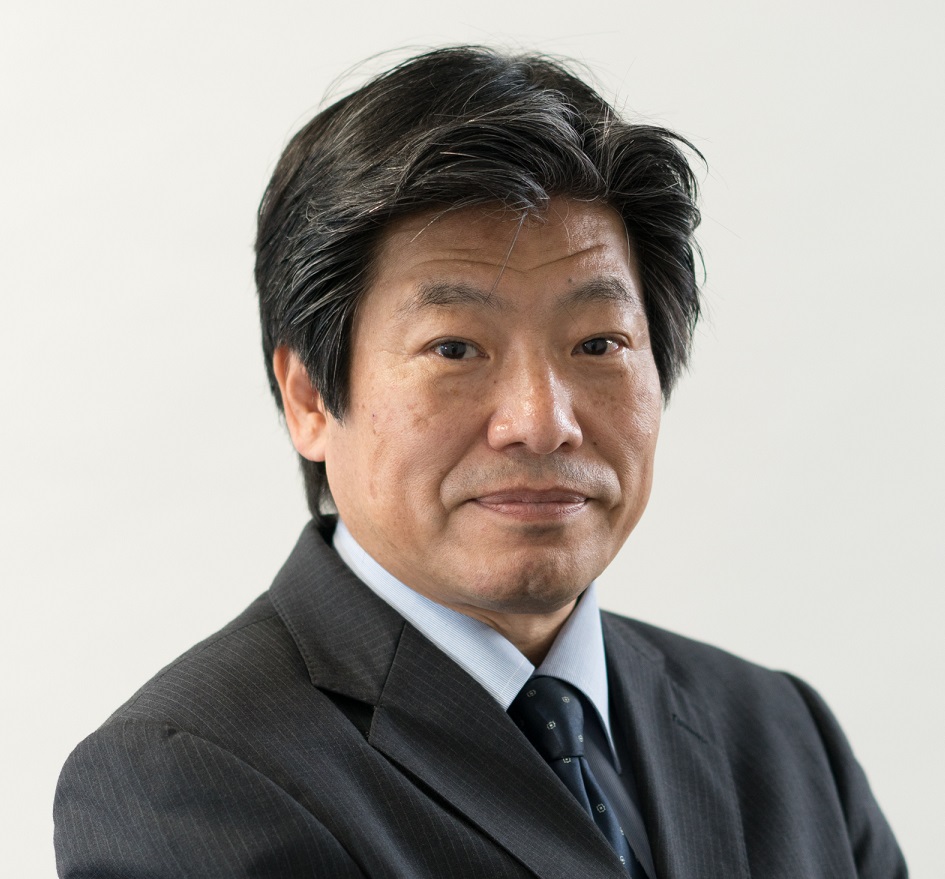
Keiji Yamada (IEICE Fellow)
Vice President, NEC, Japan
Plenary Talk Title: Social
Innovation by Advanced Information Communication Technologies - Examples of
Smart cities -
Time: 10:00-12:00, Wednesday, March 7, 2018
Abstract:
In this talk, I will discuss how to create social innovation by using
advanced Information communication technologies. As examples of social
innovation, I will introduce several projects of smart cities I have been
involved in. There we can see a way to develop new technologies
simultaneously with implementation of practical smart cities. In order to
realize a smart city, social system should be re-designed with development
of many technologies integrated by in multi-disciplinary collaboration.
During development of a smart city, new features of information
communication technologies were required and have been developed. They were
white-box-type AI, very low latency/low cost IoT network, and so on.
Furthermore, I will discuss future issues on information communication
technologies for smarter and safer cities.
Biography:
Keiji Yamada is Vice President of Central Research Laboratories, NEC Corporation since 2016. He is in charge of R&D strategy and social innovation creation by using advanced AI and IoT technology. In 1987, he received Ph.D. degree from Kyoto University and joined NEC Corporation. He also served as a visiting scholar of University of California at San Diego. In NEC, he was appointed as General Manager of Media and Information Research Laboratories, General Manager of C&C Innovation Research Laboratories, Vice President of Central Research Laboratories, and Head of NEC Laboratories Singapore. He hold prominent positions in parallel such as Board Member of Directors of IEICE, IPSJ, and Board Member of International Association of Pattern Recognition. Furthermore, he has been serving Japan Science and Technology Agency as a research area advisor and contributing to Research Centre for Computers, Communication and Social Innovation in La Trobe University in Australia as an executive committee member. Specialized in information theory, pattern information processing, human interface and social information system. Received IPSJ Sakai Special Researcher Award.
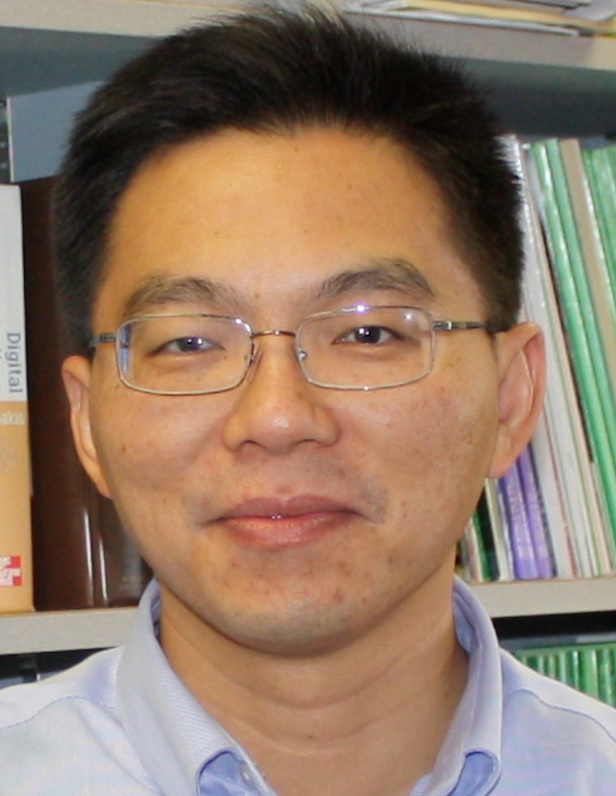
Junshan Zhang (IEEE Fellow)
Ira A. Fulton Chair Professor, Arizona State University, USA
Plenary Talk Title: The Edge of DOK (Device-Of-Kin): From Mobile Social
Networking to Fog Computing
Time: 14:30-15:30, Wednesday, March 7,
2018
Abstract:
Mobile devices have become an essential part in our everyday life.
Observe that mobile devices are operated by human beings and hence they are
devices-of-kin (DOK). A natural question here is “Why cannot these devices
in the kinship within the family, friends, or teams help each other and
cooperate just like families, friends, and team members do?” In this way,
the resources of idle devices in the proximity can be leveraged to create
significant values. With this motivation, we develop a Fog computing
platform, enabled by socially aware device-to-device (D2D) communication, to
achieve resource sharing between mobile devices in the kinship (DOK).
Specifically, we first illustrate the D2D-based Fog computing concept by a
few use cases, in communications, control and computing, and discuss the
computing paradigm change from Cloud to Fog. We then present a social group
utility maximization (SGUM) framework that takes into account both social
coupling and physical coupling among mobile users. I will explore new
directions for Fog computing, and share our view that the essence of Fog
computing is to create real-time edge intelligence by moving computation,
control and storage functionalities closer to where data is created and
acted upon.
Biography:
Junshan Zhang received his Ph.D. degree from the School of ECE at Purdue University in 2000. He joined the School of ECEE at Arizona State University in August 2000, where he has been Fulton Chair Professor since 2015. His research interests fall in the general field of information networks and data science, including communication networks, Internet of Things (IoT), Fog Computing, social networks, smart grid. His current research focuses on fundamental problems in information networks and data science, including Fog Computing and its applications in IoT and 5G, IoT data privacy/security, optimization/control of mobile social networks, cognitive radio networks, stochastic modeling and optimization for smart grid.
Prof. Zhang is a Fellow of the IEEE, and a recipient of the ONR Young Investigator Award in 2005 and the NSF CAREER award in 2003. He received the IEEE Wireless Communication Technical Committee Recognition Award in 2016. His papers have won a few awards, including the Kenneth C. Sevcik Outstanding Student Paper Award of ACM SIGMETRICS/IFIP Performance 2016, the Best Paper Runner-up Award of IEEE INFOCOM 2009 and IEEE INFOCOM 2014, and the Best Paper Award at IEEE ICC 2008 and ICC 2017. Building on his research findings, he co-founded Smartiply Inc in 2015, a Fog Computing startup company delivering boosted network connectivity and embedded artificial intelligence. Prof. Zhang was TPC co-chair for a number of major conferences in communication networks, including IEEE INFOCOM 2012 and ACM MOBIHOC 2015. He was the general chair for ACM/IEEE SEC 2017, WiOPT 2016, and IEEE Communication Theory Workshop 2007. He was a Distinguished Lecturer of the IEEE Communications Society. He was an Associate Editor for IEEE Transactions on Wireless Communications, an editor for the Computer Network journal, and an editor IEEE Wireless Communication Magazine. He is currently serving as an editor-at-large for IEEE/ACM Transactions on Networking and an editor for IEEE Network Magazine.